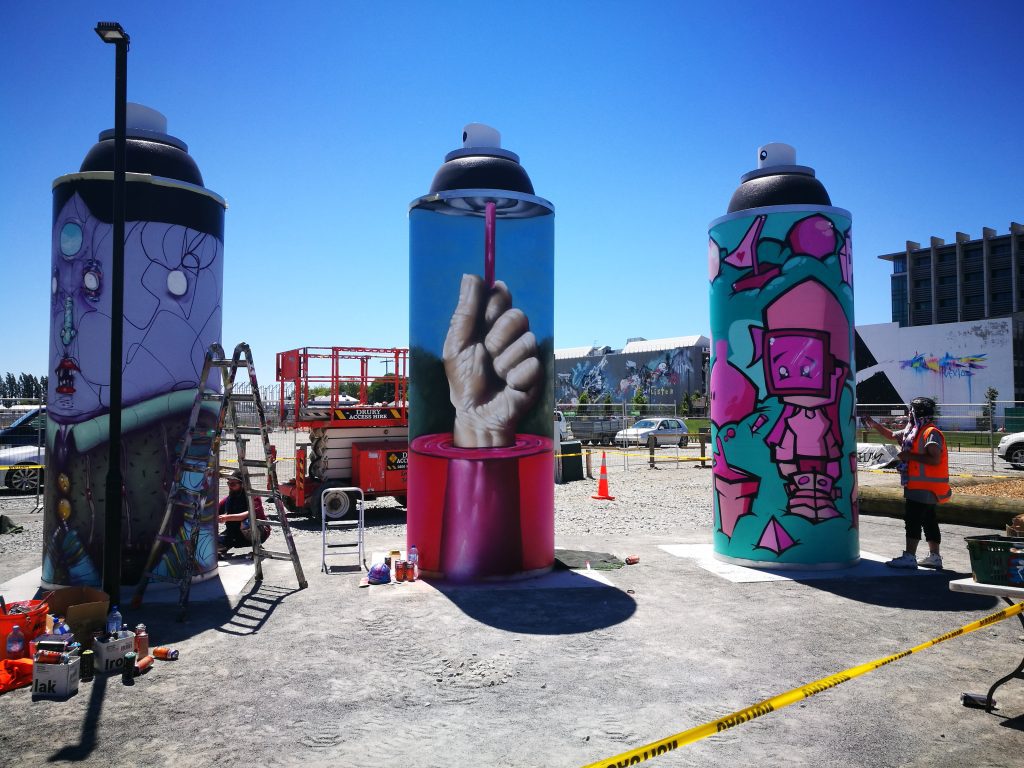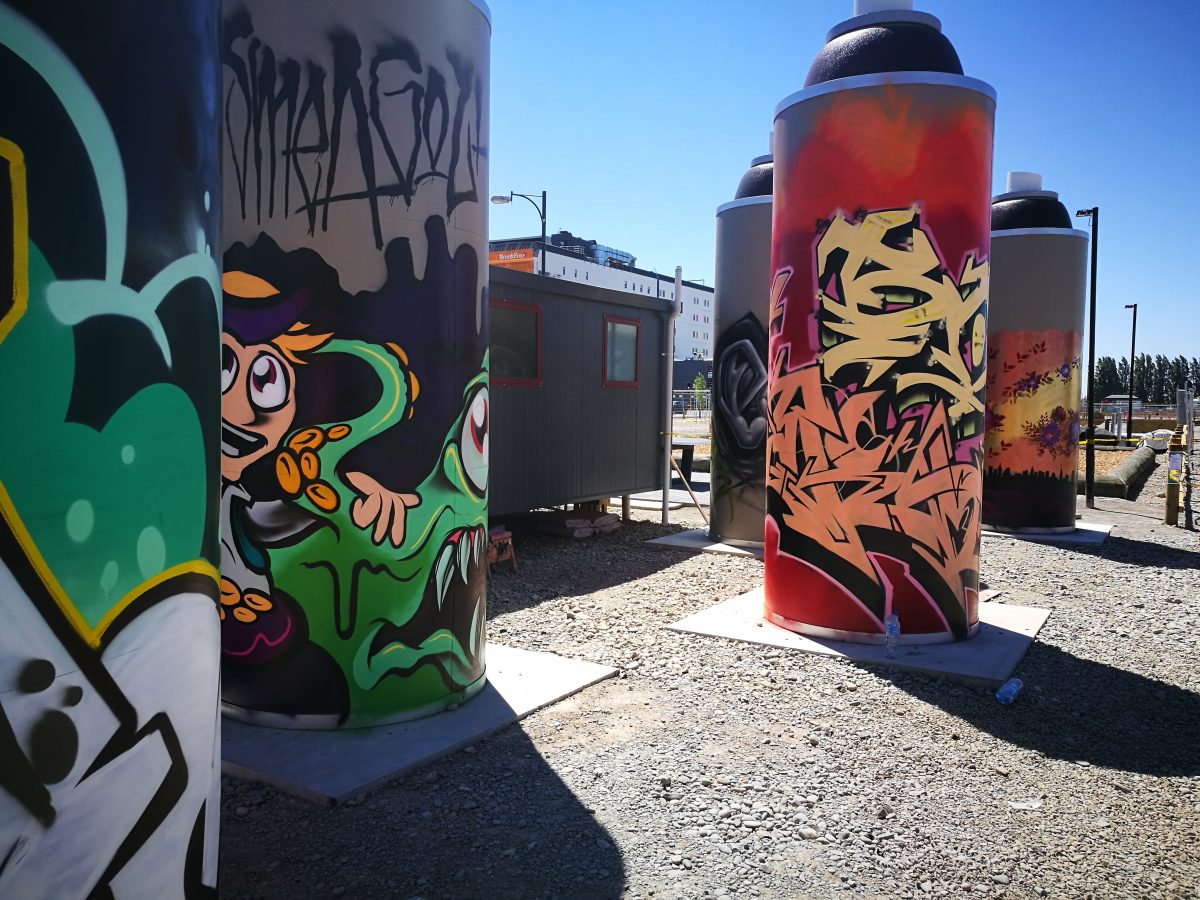Saturday, December 2nd, saw the official opening of the new ‘Youth Space’ in the central city’s East Frame. The space, a project facilitated by GapFiller, Ōtakāro and Fletcher Living, combines a basketball court and a rock climbing area, with perhaps the most forward-thinking element: an evolving art space that allows artists to freely paint in public without fear of repercussion. This is a first for the city, a step further than those spaces where painting is tolerated or ignored, but not technically allowed (those peripheral spaces that have long served graffiti and street art’s development, such as alleyways and train tracks). This is an innovative move that has been pushed for a long time by those from the cultures, but has too often fallen on deaf authoritarian ears.
The space contains eight giant spray cans which have become literal objects for art. The eight cans are physically split in two groups, with three cans intended for more established artists to produce long term works that will be refreshed sporadically, and five serving as ‘free-for-all’ surfaces, as evolving canvasses. They will operate on a first come, first served basis, and as artist Wongi ‘Freak’ Wilson has noted, people should be prepared to document their work, as any contribution may last a week, a day, or a minute, as is the nature of such a space, and of course, is an undeniable aspect of guerrilla street practices anyway. On the opening day Wilson, Ikarus and Jacob Yikes, from Christchurch’s famed DTR crew, painted the three ‘permanent’ cans, while local artists Beksi, Dove, Bore, Smeagol and Drows were given the opportunity to give the five other cans their first layer.

Notably, the surfaces on which people are invited to paint are part of the lineage of the city’s ongoing love affair with urban art: the giant spray cans were fabricated as part of Oi YOU’s Spectrum shows, and if they are aware of history, the city’s youth can now paint on surfaces to which artists such as Jorge Rodriguez-Gerada, Sofles, Berst, Seth Globepainter, Tilt, Flox and many more are historically connected, even if no longer visible. That these objects are in proud place in the inner-city streets is testament to a shifting opinion around the art with which they have an unavoidable kinship. It is also important to note that the cans are not buildings, they are specifically in place as surfaces for art and that is both unique and partly why the concept works; their decoration is not an affront to private ownership, not even by association.
Of course, such a concept is not without risk, and it should be admitted, it will not prove a cure-all for vandalism (which is not the explicit goal of the space, but will surely be read as such by some). Vandalism, which is not a by-word for graffiti, and exists without a pen or a can of paint, is driven by a desire to fracture physically and symbolically, and a permissioned space will not attract those who are interested purely in transgression. But it will importantly provide an opportunity for artists to develop, to experiment, and to grow and that is no small thing. Indeed, the potential this space provides should be celebrated as a significant shift in thinking around these artistic cultures. Also, it should not be expected to rival the sheer scale and cohesive appearance of the grand murals dotted around the city (and notably nearby). The space will instead produce an aesthetic more akin to urban art’s natural state, a visual quality that many find infinitely fascinating, created in layers over time and representative of thousands of voices, but admittedly, others find harder to comprehend. This is always at the heart of such an undertaking, the various positions and desires of contributing factions will be at odds, a microcosm of the city at large.
The future of this innovative approach will of course be in some way determined by outcomes authorities are interested in, regardless of whether such desires are realistic. But with planned workshops and other events, it will become an important and fascinating location for the city’s ever-evolving graffiti and street art cultures, an important step in the city’s creative evolution, potentially unearthing new stars and providing a continuing reminder of the potential found in opportunity.

